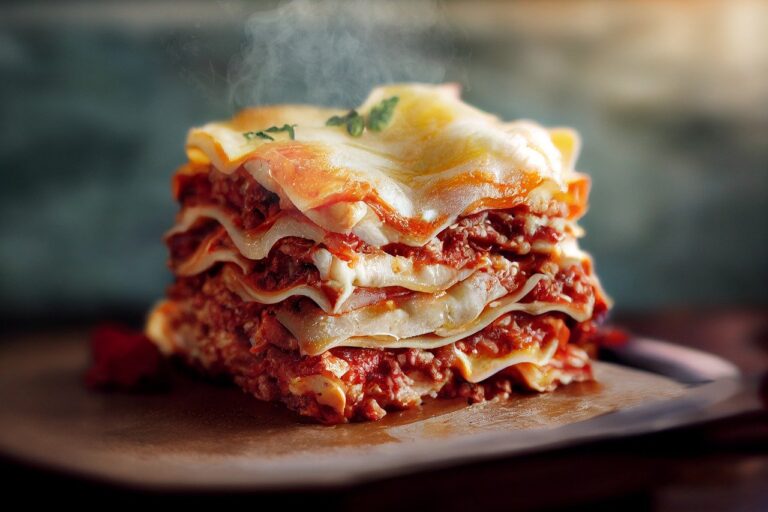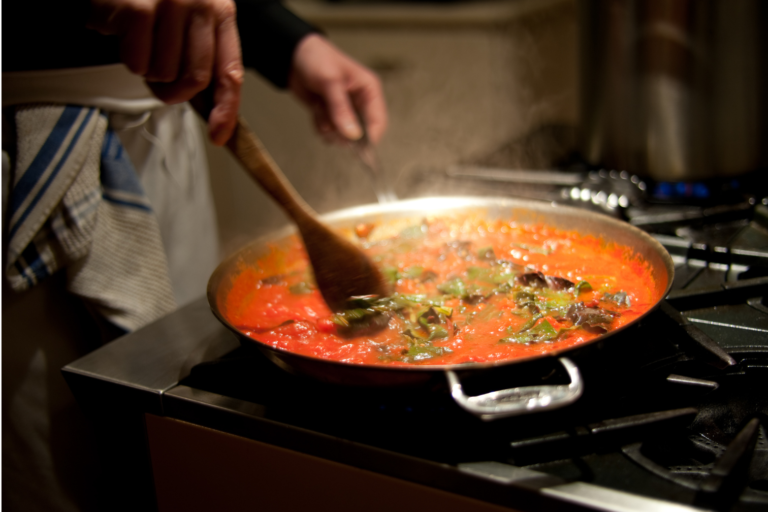The Differences Between Italian and Italian American Cuisine
Last week, I introduced myself to a new acquaintance and happened to mention that I am Italian…

Last week, I introduced myself to a new acquaintance and happened to mention that I am Italian American. I explained that my wine brand celebrates “all things Italian”, including cuisine. The next thing she said to me was: “Oh, my favorite Italian food is Veal Parmesan.” We had just met, so I didn’t want to start an argument and didn’t have the heart to tell her that this dish is not Italian, but actually American. Some of you reading this, even if you’re Italian American, might say “What? Of course it is Italian!”
And therein lies the purpose of this blog post- to dispel some commonly held myths about which cuisines are Italian (i.e. you’ll find it in Italy) vs. which are Italian American (meaning they are American inventions that you won’t find in Italy). Let’s explore the differences between the two.
First, a little history…
Italians Brought Their Culinary Traditions to America
In the late 19th and early 20th centuries, waves of Italian immigrants – including my great grandparents Costantino and Angelamaria Battista – primarily from the central and southern regions of Italy like Naples, Sicily, Abruzzo, and Calabria, arrived in the United States. They brought with them their culinary traditions, centered around simple, seasonal ingredients and resourceful cooking techniques.
However, adapting to their new home presented challenges. Ingredients familiar to them, like fresh seafood and certain vegetables, were either scarce or expensive. This lack of availability, coupled with the desire to cater to American palates accustomed to richer flavors, led to the gradual evolution of Italian American cuisine, a tasty fusion of tradition, adaptation, and nostalgia.
Veal Parmigiana, Chicken Marsala, and Cioppino stew are all delicious, but decidedly inauthentic. These dishes were born in Italian American kitchens and bear little resemblance to their Old-World counterparts.
Before we explore more examples of Italian American foods that many people probably think of as Italian, let’s talk about the general differences between Italian and Italian American cuisine.
Italian Style vs. Italian American Style Cuisine
Key Ingredients & Cooking Techniques in Italian Cuisine
Italian cuisine is known for its simplicity, with many dishes having fewer than eight ingredients. Ingredients are chosen based on their quality and regional availability, leading to a wide variety of dishes across Italy’s 20 regions. Staples in Italian cooking include olive oil, tomatoes, garlic, and fresh herbs like basil and oregano, each adding a signature flavor to traditional Italian dishes. Seafood plays a crucial role in coastal areas and islands like Sicily and Sardinia, while inland regions offer a variety of meats and cheeses.
Techniques such as braising, sautéing, and grilling are common, with an emphasis on timing and precision to preserve ingredient integrity.
Staple Ingredients in Italian American Cuisine
On the other hand, Italian American cuisine often features heavier, richer ingredients. Mozzarella cheese, meats, and tomato sauce are used generously, creating more robust and hearty dishes than their Italian counterparts. This cuisine also tends to favor dried herbs and garlic powder for convenience and consistency in flavor. Additionally, red pepper flakes, a distinctly American addition, provide a touch of heat not commonly found in traditional Italian dishes.
Italian American cooking has adapted Italian techniques to suit American kitchens and tastes, often simplifying traditional methods for convenience and using ingredients that are widely available.
Which Dishes are Italian vs. Which Dishes are Italian American?
1. Italian Pasta vs. Italian American Pasta
Italian: Pasta is the heart and soul of any meal in Italy. It’s typically cooked al dente, meaning “to the tooth,” resulting in a slightly firm texture. Simple sauces, like Pomodoro Fresco (fresh tomato sauce) or Aglio e Olio (garlic and olive oil), highlight the inherent flavors of the pasta and fresh ingredients.
· Examples of Italian Pasta Dishes: Spaghetti alla Carbonara, Pasta alla Bolognese, Pasta al Pesto Genovese, Cacio e Pepe, and Risotto alla Milanese.
Italian American: While pasta remains important, Italian American cuisine often features thicker, softer noodles and richer sauces. Marinara sauce, a creation of Italian Americans, incorporates herbs like oregano and basil, giving it a more robust flavor compared to the simpler Italian tomato sauces. Meatballs, another Italian American staple, are rarely seen in traditional Italian pasta dishes.
· Examples of Italian American Pasta Dishes: Spaghetti & Meatballs, Fettuccine Alfredo, Baked Ziti, Chicken Parmesan with Pasta, and Penne alla Vodka.
2. Italian Pizza vs. American Pizza
Italian: Pizza, hailing from Naples, is a thin-crust masterpiece. The dough is simply seasoned with tomato sauce, mozzarella cheese, and often, fresh basil. This simplicity allows the quality of the ingredients to shine through.
· Examples of Italian Pizzas: Margherita, Marinara, Quattro Stagioni. Capricciosa, Diavola.
Italian American: American-style pizza is a celebration of variety. From the thick, bready crusts of Chicago deep-dish to the foldable New York-style slices, there’s a pizza to suit every preference. Toppings are aplenty, with pepperoni being a quintessential American addition.
· Examples of Italian American Pizza- New York Style, New Haven Style, Chicago Deep Dish; Sicilian Style and Neapolitan Style, while both hailing from Italy, both heavily influence American pizza as well.
3. Italian Meats vs. Italian American Meats
Italian: Meat features in Italian cuisine, but often plays a supporting role. Delicately prepared cuts, like braised lamb or thinly sliced prosciutto, are enjoyed for their natural flavors. Offal, like tripe and liver, is also sometimes incorporated, reflecting the resourcefulness of Italian cooking.
Italian American: Italian-American cuisine tends to feature larger portions of meat, often cooked in bold and savory sauces. Hearty meatballs, sausage links, and chicken parm exemplify this preference for a more prominent, meat-centric experience.
Cultural Significance
The differences between Italian and Italian American cuisine go beyond just ingredients and recipes. They reflect the unique cultural journeys of Italian immigrants and their descendants, adapting traditions to new environments while creating something new and delicious.
Italian food celebrates regionality, with each region boasting its own distinct flavors and specialties. Italian American cuisine, on the other hand, is a beautiful melting pot, incorporating influences from various regions and adapting to American cultural preferences.
Italian cuisine is more than just food; it’s a reflection of Italy’s history, culture, and family life. Meals are a time for gathering and celebration, deeply rooted in tradition and regional identity.
For Italian Americans, food is a symbol of their immigrant heritage and a way to maintain a connection to their ancestral homeland. Italian American cuisine has become a vital part of the American cultural landscape, celebrating the fusion of cultures and creating new traditions such as Sunday Sauce.
I hope you enjoyed learning about the difference between Italian and Italian American foods. Mangiamo!






